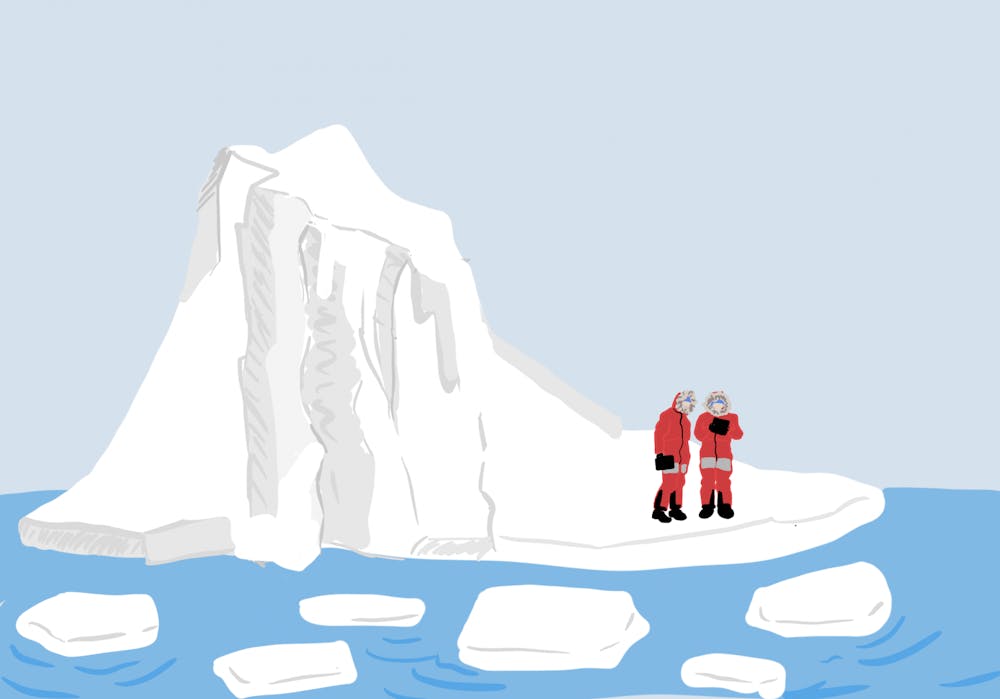In an effort to better understand Earth’s climate history, University researchers have joined a nationwide collaborative effort to discover Antarctica’s oldest ice.
On Sept. 9, the National Science Foundation announced their approval of a five-year, $25 million grant for the launch of the Center for Oldest Ice Exploration. The center, referred to as COLDEX, is one of six new centers the NSF created last month. COLDEX will develop new technologies to probe for ice cores and fund researchers to explore Antarctica.
“We want to understand the natural modes and variability of (Earth’s) climate system and how those are related to future changes,” said Ed Brook, professor of paleoclimatology at Oregon State University and the principal investigator for COLDEX.
The Antarctic ice sheet is the largest and oldest ice mass on Earth, dating back more than 30 million years. As new layers of Antarctic snow bury old layers, the buried snow is compacted into ice, trapping small air bubbles in the process, Brook said. These bubbles — frozen in time — indicate to researchers the composition of atmospheric carbon and other greenhouse gases throughout Earth’s history, he added.
“We have lots of indirect data that go back much further (than data from the bubbles) … they’re just not as precise,” Brook said. The bubbles, which Brook called “real samples of ancient air,” are “the only direct measure of the composition of the atmosphere” scientists have from before the 1960s — when scientists started directly measuring atmospheric concentrations by instrumentation, he said.
As an ocean and climate modeler, University Professor of Earth, Environmental and Planetary Sciences Baylor Fox-Kemper works to make indirect models more accurate in predicting future climate changes. Bubbles formed in ice “are special among the different paleoclimate records we have because they’re relatively easy to date,” he said.
The oldest Antarctic ice sheet samples obtained date back 800,000 years ago to the start of the glacial periods, when the Earth’s temperature was about eight degrees Celsius colder than it is today. The COLDEX researchers hope to find ice cores from when the average temperature of the Earth was warmer, before the first glacial period. Their goal is to find a continuous ice sample going back 1.5 million years to allow them to trace the changes in atmosphere throughout the time period, Brook said.
“There’s a hunt to find old ice, because unfortunately ice flows out from the center of ice sheets and eventually melts at the edges, or falls into the ocean and melts,” wrote University Professor of Earth, Environmental and Planetary Sciences Timothy Herbert in an email to The Herald. Herbert, whose lab uses deep sea sediments to study climate evolution over the past several million years, highlighted the difficulty in finding Antarctic ice dating back more than one million years. It would require “a lot of exploration and some luck,” he said.
The “COLDEX mission will help us continue to test and improve (previous) models based on evidence from the Earth’s past,” wrote Herbert, who is not affiliated with COLDEX.
“What we’d like to do is provide more data to help us understand what climates are like when you have higher average carbon dioxide levels,” Brook said. While climate change is driven by changes in the Earth’s orbit, the carbon cycle and chemistry of the ocean also play a significant role, Brook added. Studying atmospheric carbon dioxide levels in warmer climates might clue scientists in on what influence greenhouse gas levels will have in the future, he added.
“The key point from my perspective is that these kinds of records give us a sense of how unprecedented modern (climate) change is,” Fox-Kemper said. Citing the most recent assessment report of the Intergovernmental Panel on Climate Change, which he was a coordinating lead author for, Fox-Kemper said that the IPCC ice sheet data went back 800,000 years. If COLDEX finds ice sheet data dating back further, this would provide “even stronger evidence that what we’re seeing now is unprecedented.”
Another part of COLDEX’s mission will be to increase diversity and inclusion in science by recruiting students and early-career scientists from underrepresented groups in STEM. COLDEX will also host professional development programs for its scientists and faculty.
University Professor of Earth, Environmental and Planetary Sciences Meredith Hastings will lead COLDEX’s professional development programs to help train up-and-coming COLDEX researchers in leadership and networking skills. Hastings co-founded the Earth Science Women’s Network in graduate school, and has since grown the organization from a handful of female scientists to a collaborative of thousands of women worldwide. She was asked to lead the COLDEX professional development workshops because of her experience with ESWN.
“I think it’s a really cool opportunity — no pun intended” to increase the accessibility of climate science research, Hastings said. “There is an interest and a need to make sure that the community (COLDEX) builds as part of this big scientific effort is one that is diverse, equitable and encourages the next generation of researchers to do polar research.”
“It takes a lot of effort and funding to get to the polar regions to drill ice cores, and you have to be in the right research groups and have the right access and the right funding. Not everybody has that access,” Hastings said.
“I’m excited to be able to offer something that will hopefully make everyone on the team more successful because I think if the early-career researchers, graduate students, postdocs and early-career faculty are successful in their professions, then the science will get better and better,” Hastings said. She added that as a climate scientist who has sampled ice cores to study the changes in the nitrogen cycle over time, she is “very excited” to be involved in COLDEX’s scientific efforts.
“This kind of broad, collaborative effort is a really important aspect of climate science,” Fox-Kemper said. “It’s great that some of the scientists at Brown are involved.”





